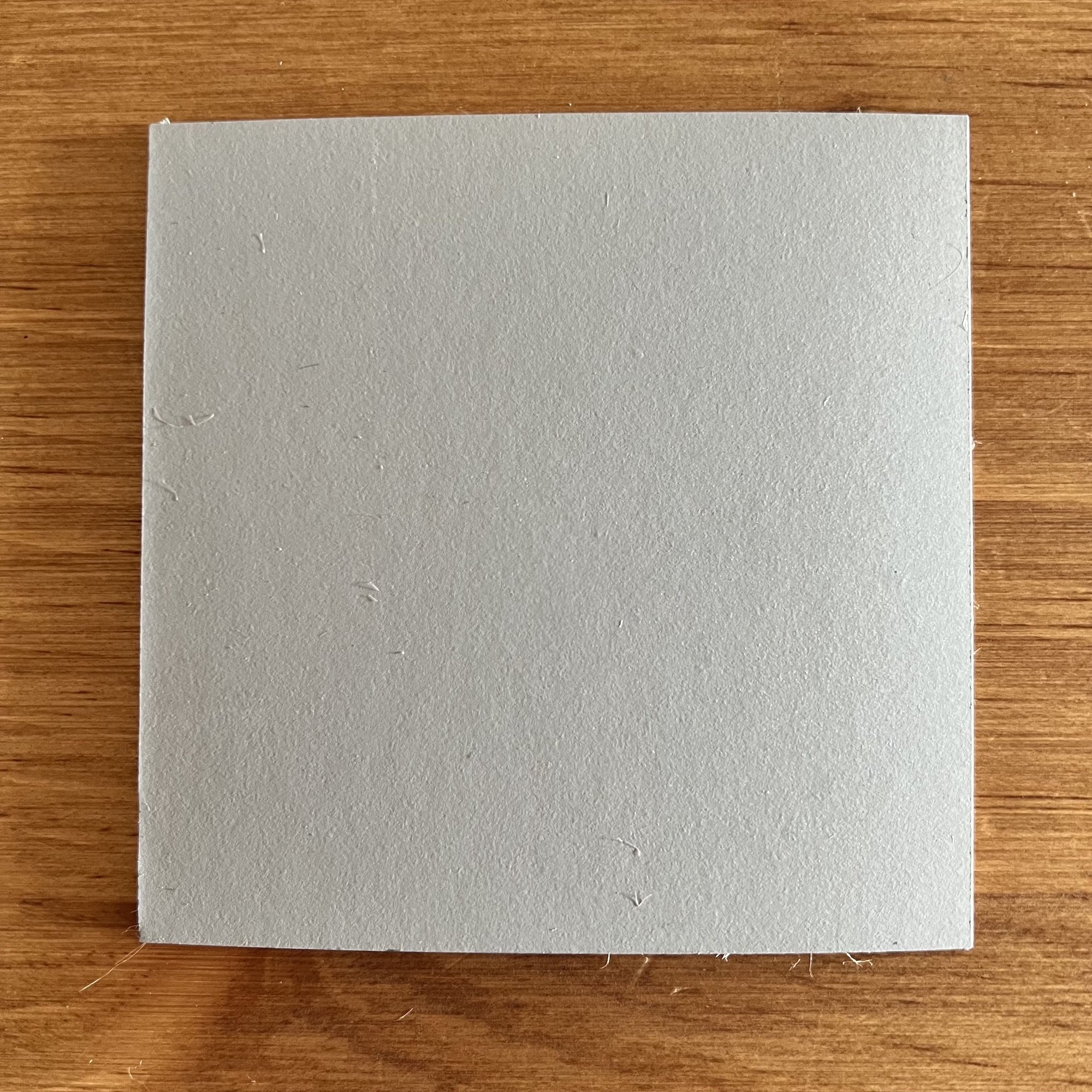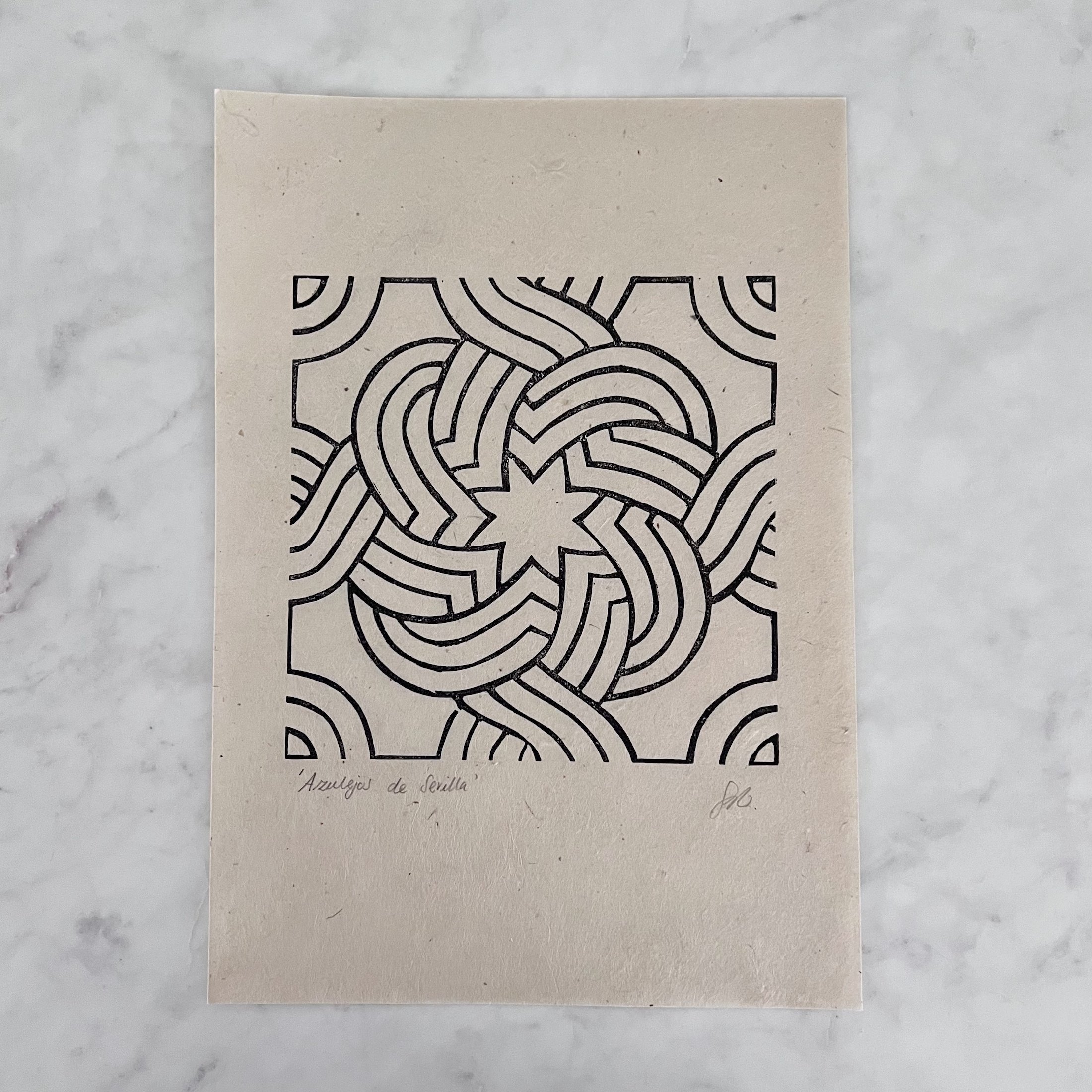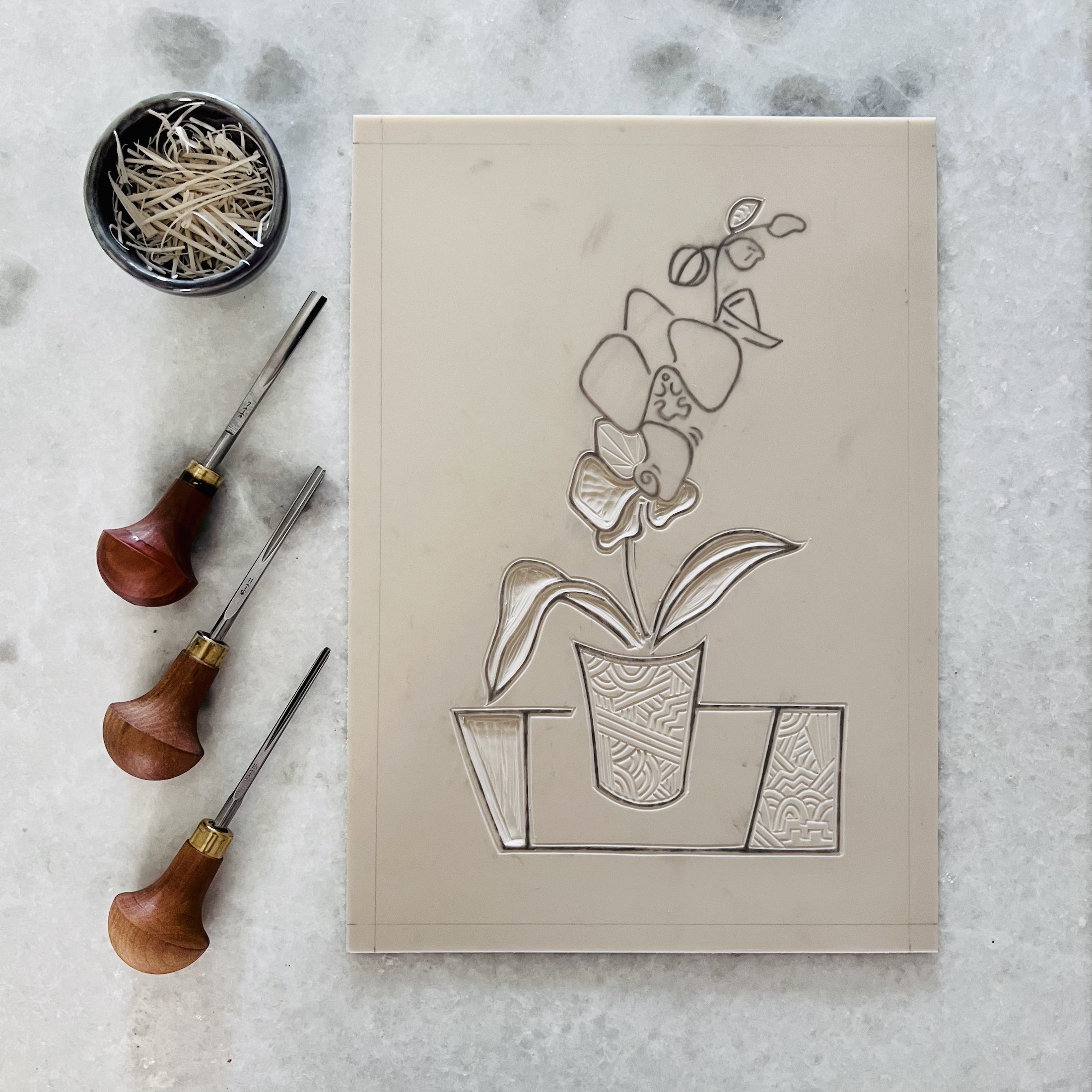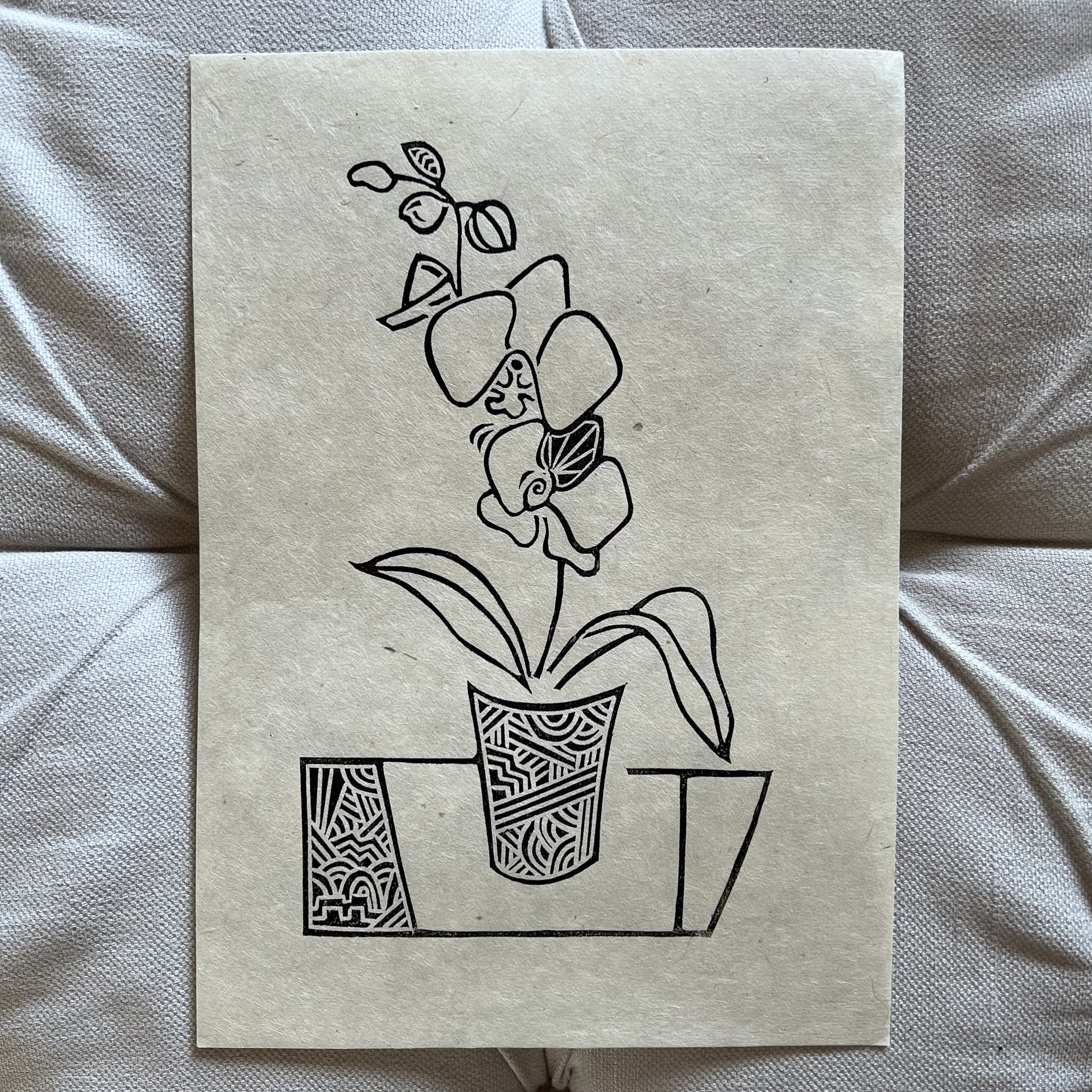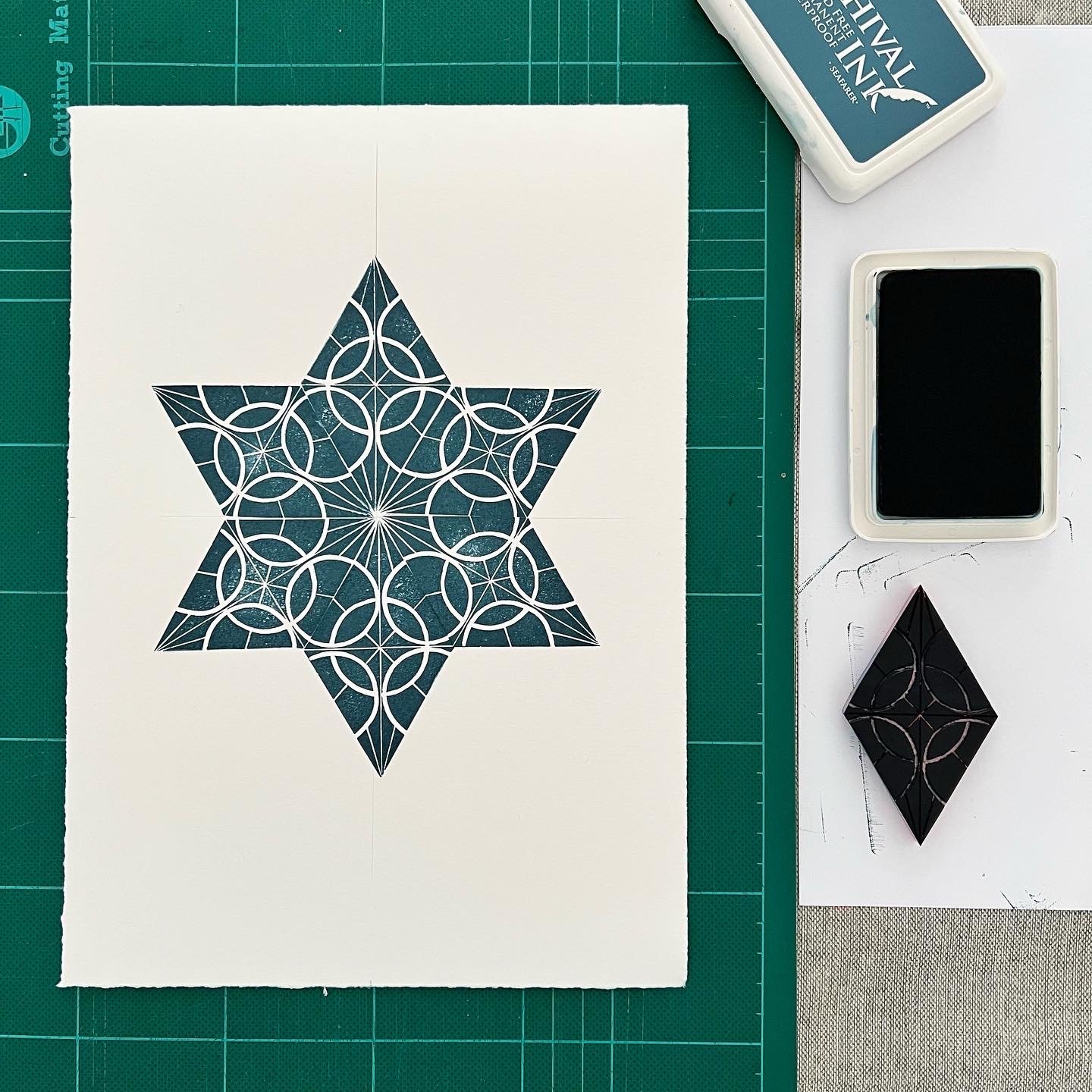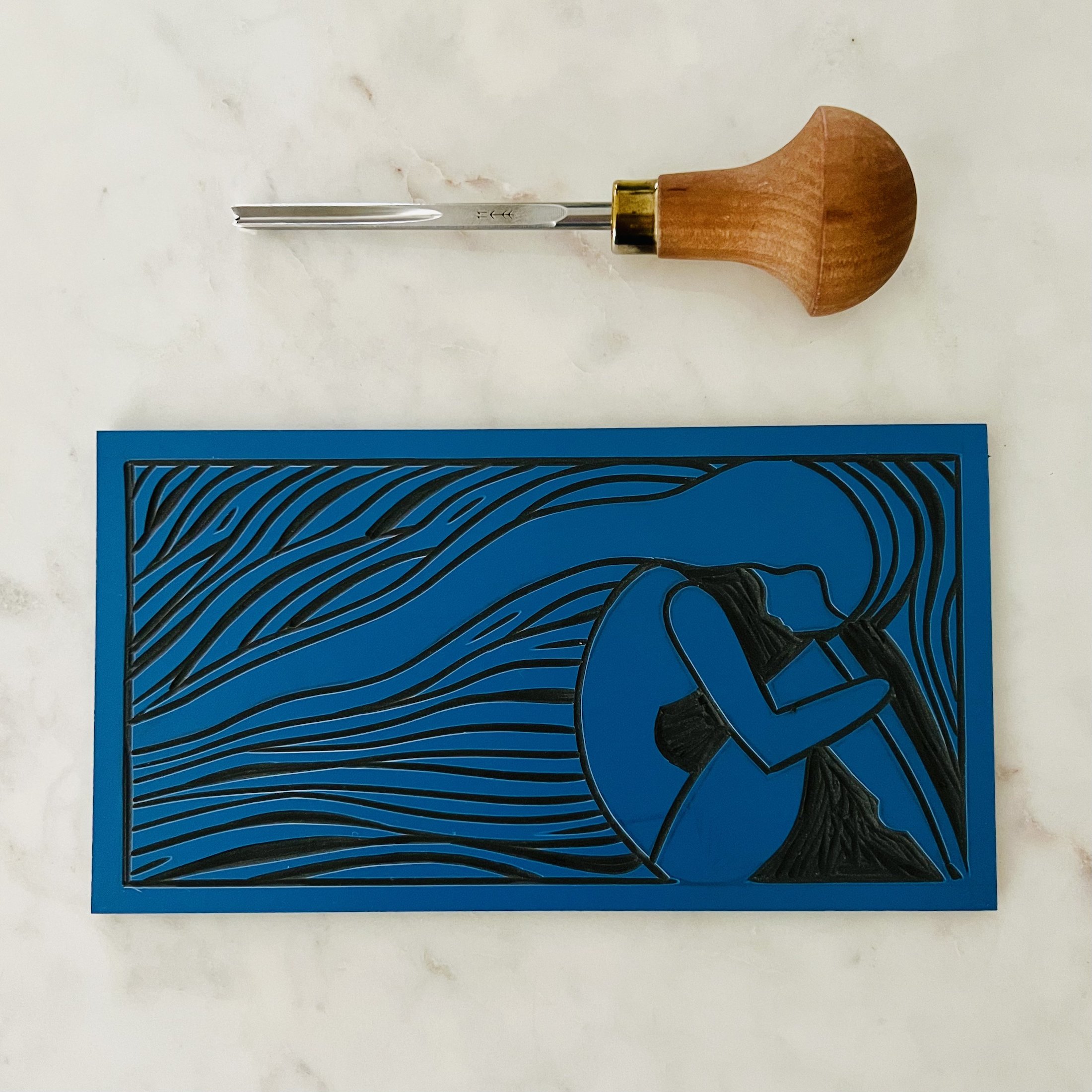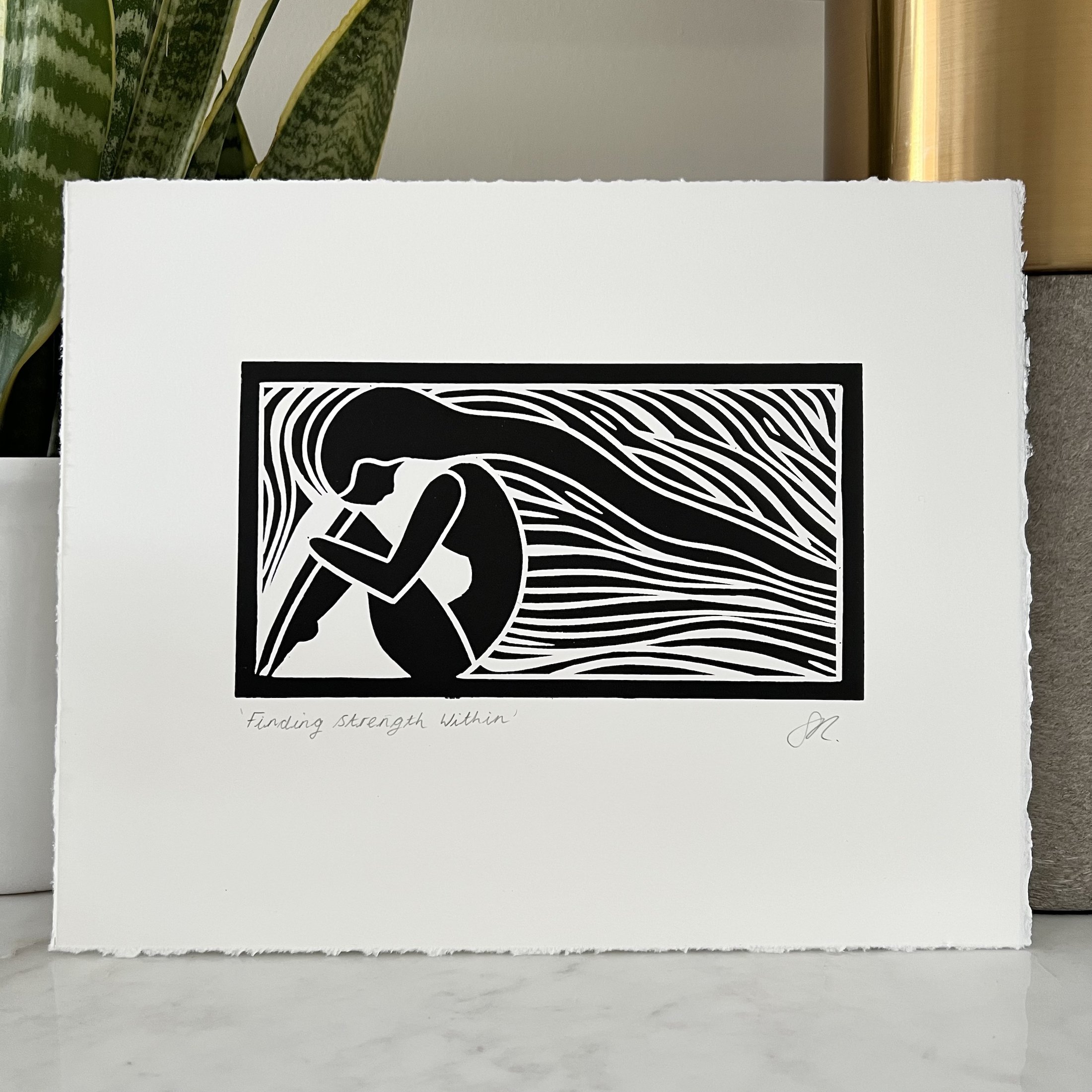Best Material for Lino Printing - Traditional Lino or SoftCut?
When most people come across lino printing, they start with a traditional lino block, but there are a variety of different surfaces available that you can use for lino printing. Once you start investigating all the different lino surfaces, it can become quite confusing.
In this blog post, I set out the pros and cons of each material to help you decide what you would like to use in your printmaking. I compared Traditional Lino, SoftCut by Essdee, Speedy-Carve by Speedball and Japanese Vinyl.
Table of Contents
Traditional Lino
What is traditional lino made from?
A traditional lino block is grey in colour and backed with hessian. It has a woven structure. It can degrade over time, so you need to make sure the lino you are using is soft, fresh and has a pleasant smell.
Traditional lino is a natural, plant based material, making it much better for the environment than other surfaces.
What are the benefits of using traditional lino?
It is very easy to transfer your design onto lino and pencil lines show up really well.
It can be harder to carve than some of the softer options, such as Essdee Softcut, but the carved lines are crisp, making traditional lino a favourite of professional printmakers.
It is advisable to warm up the lino to soften it up and make it easier to carve. The best method I have found to warm up the lino is to use a hairdryer. Warming up the lino also reduces the chances of it cracking.
Pros of using traditional lino
Relatively cheap
Better for the environment than other materials
Very easy to draw your design on with a pencil
Crisp lines when carving
Cons of using traditional lino
Degrades over time and becomes unusable
Warps when washed
Ideally needs to be warmed up before carving
Difficult to cut with a craft knife
Can require more prep than other materials (see Helpful tips below)
Traditional lino is best for: Professional prints and the environmentally conscious
Helpful tips when using traditional lino:
It’s possible to easily warm up the lino using a hairdryer.
Once your design is on the lino, paint the lino with a layer of acrylic wash (watered down acrylic paint in any colour). This makes it easier to see your design as you carve.
Coat the back of the lino with Liquitex Acrylic Gloss Medium before you carve, this stops the lino from warping when you wash it after printing.
If you have a printing press, you can put warped lino under your printing press to flatten it.
Essdee SoftCut
What is Essdee SoftCut made from?
SoftCut is a manmade rubber-like material manufactured by Essdee as a great alternative to traditional hessian-backed lino.
As SoftCut is made from plastic, it is not as good for the environment as traditional lino, however, you can buy SoftCut in bulk without worrying that it will degrade over time.
What are the benefits of using Essdee SoftCut?
It is formulated to be extremely easy to carve, making it appealing to a wider range of users than traditional lino.
This is a great material for beginners, as carving is lovely and smooth. Although, it is also popular with more experienced printmakers too. A finished design carved into SoftCut will last for years.
Pros of using Essdee SoftCut
Easier to carve without much effort
Easy to clean
Lasts a long time
Cons of using Essdee SoftCut
Made from plastic, so it is not as environmentally friendly as traditional lino
More expensive than traditional lino
Transferring images can smudge
Easier to slip and make mistakes
Lines are not as crisp as on traditional lino
Essdee SoftCut is best for: Beginners
Speedy-Carve by Speedball
What is Speedy-Carve made from?
Similar to SoftCut, Speedy-Carve is made from rubber.
As it is manmade, it is not as good for the environment as traditional lino, however, you can buy Speedy-Carve in bulk without worrying that it will degrade over time.
What are the benefits of using Speedy-Carve?
As with SoftCut, Speedy-Carve is softer and easier to carve than traditional lino. The surface is flexible and durable and will not crack, crumble or break.
This material is a lot thicker than all the other materials, which makes it ideal for stamps (when you are holding the lino and stamping it onto paper, as opposed to laying the lino flat and smoothing your paper over the design).
Speedy-Carve is the most expensive of the materials and the thickness of it means that it is the worst from an environmental perspective.
Pros of using Speedy-Carve
Easier to carve than traditional lino
Easy to cut to size with a craft knife
Great for making stamps
Easy to clean
Lasts a long time
Cons of using Speedy-Carve
Made from plastic, so it is not as environmentally friendly as traditional lino
Very expensive (particularly in the UK)
Transferring images can smudge
Speedball Speedy-Carve is best for: Making Stamps
Japenese Vinyl
What is Japenese Vinyl?
Japenese Vinyl is a manmade double sided material that is blue on one side, green on the other and black in the middle.
You can carve on either side. It is softer than traditional lino, but not as soft as SoftCut or Speedy-Carve.
What are the benefits of using Japenese Vinyl?
Japanese Vinyl does not degrade over time, the way traditional lino does.
Carved lines are crisper than SoftCut or Speedy Carve.
For these two reasons, Japanese Vinyl is a great alternative to traditional lino for experienced or professional printmakers. There is a sheen to the material, which I find makes it difficult to transfer a design to be carved, which is a drawback.
Pros of Japenese Vinyl
Easier to carve than traditional lino, but retains its shape better than SoftCut or Speedy-Carve
Easy to clean
Very durable
Cons of Japenese Vinyl
Can be hard to cut to size
Can be difficult to transfer a design onto it
More expensive than traditional lino
It is a manmade material, so it is not as environmentally friendly as traditional lino
Japanese Vinyl is best for: Professional prints
Which material should you use for your lino printing?
As you can tell from this blog post, each material is suitable for a different purpose, depending on what you would like to create and how experienced you are with lino printing.
I would recommend Essdee SoftCut for beginners as it’s so pleasant to carve. As I have been printing for a while, I often use Japanese Vinyl as I feel it keeps the shape better than SoftCut. If I am making stamps, I use Speedy-Carve. Traditional Lino is also a favourite as I’m conscious of the environment and like to use natural materials as much as possible.
I hope you have found this information useful. If you have any other tips you think I should include in the post, please feel free to email me at sarahransomeart@gmail.com, I would live to hear your thoughts.


